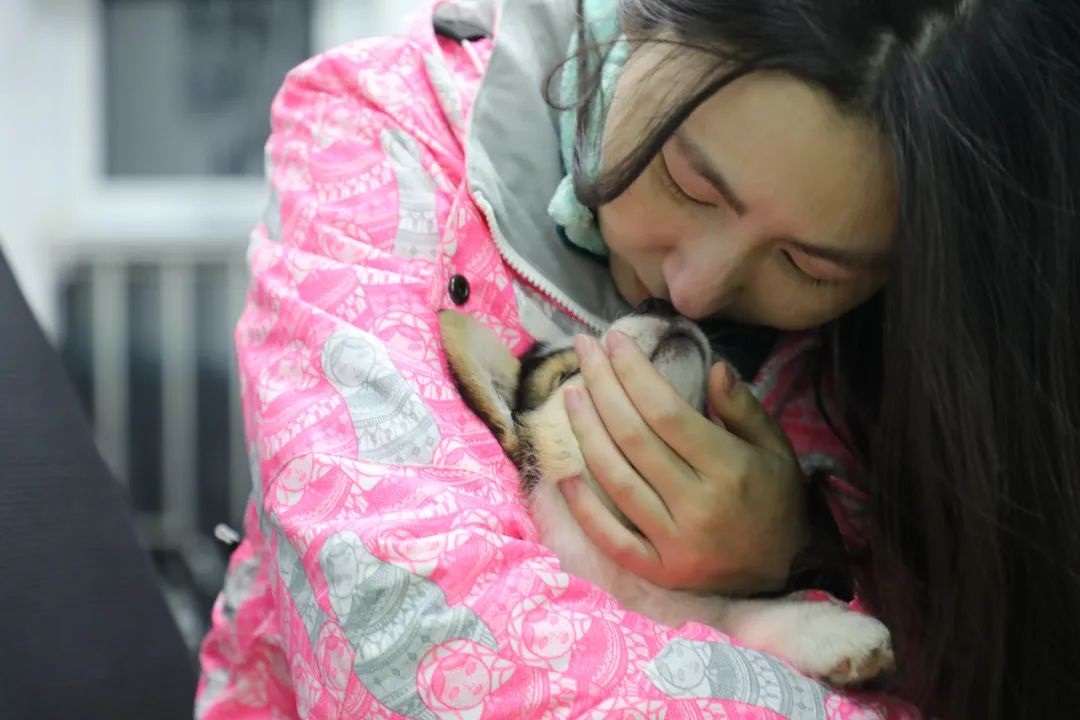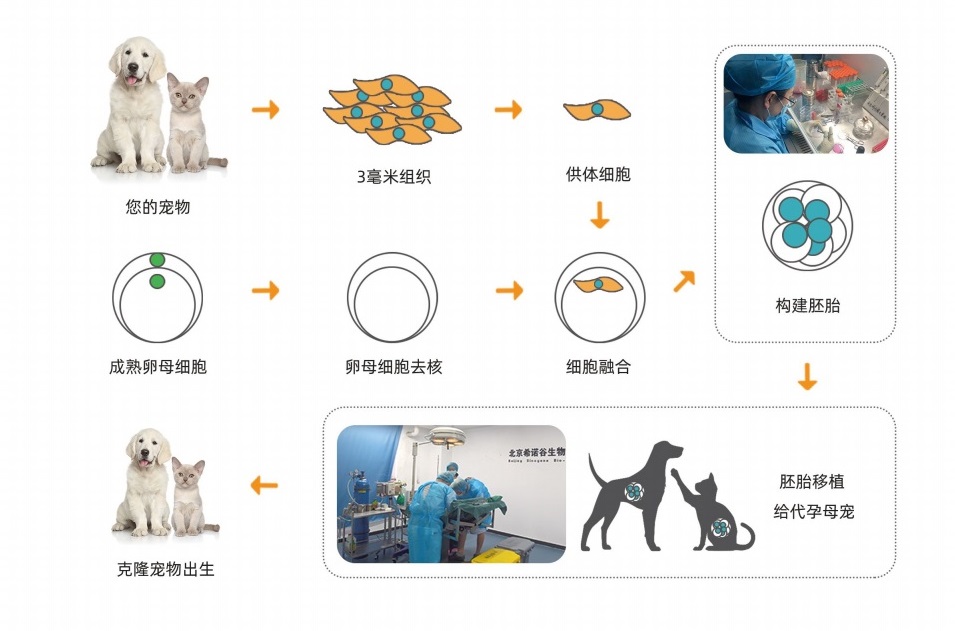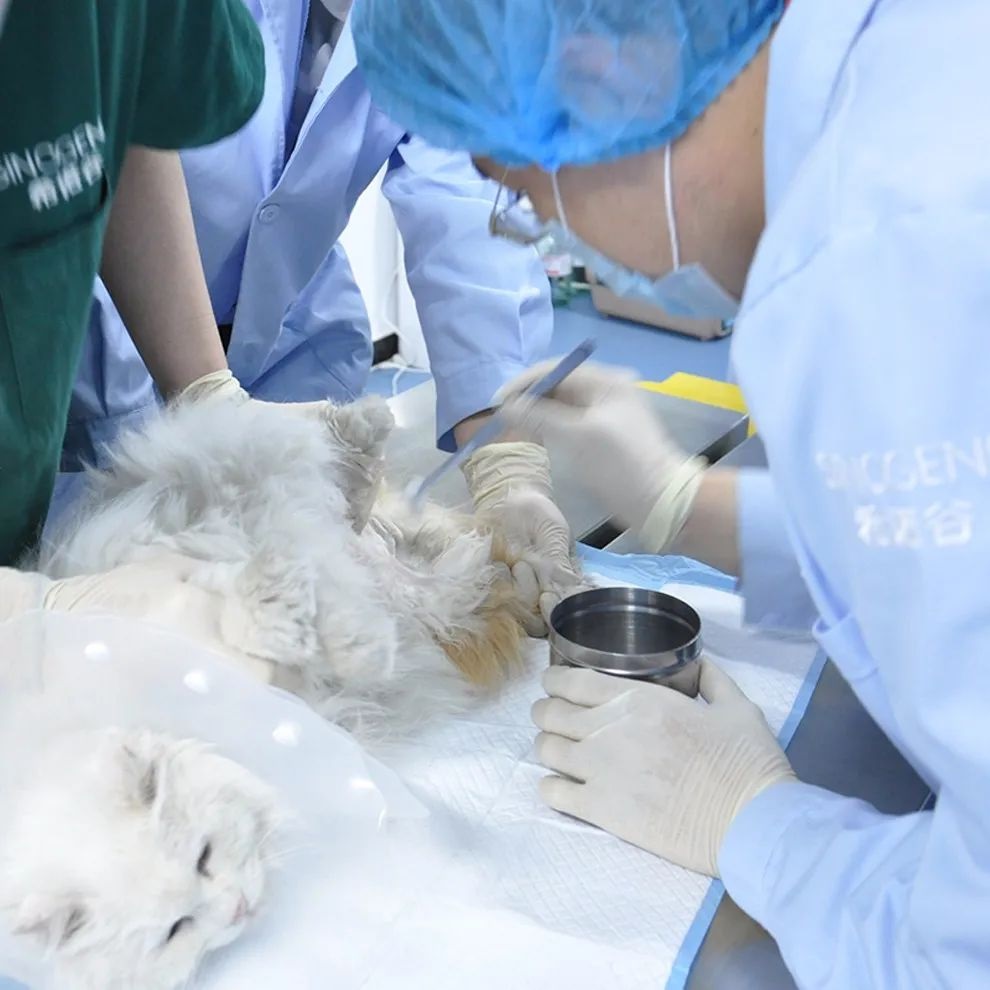
Believe all pet owners have to face one thing:
"How long can my baby accompany me? What should I do if one day it is gone?"
The customer service at Sinogene are also frequently asked:
"Can my cat/dog be cloned after death?"
"Can their fur, bones, blood be used for cloning?"
...

Although it has been popularized many times, it is believed that many pet owners are still unsure of what it takes to clone a pet and whether their pet can seize the opportunity to be successfully cloned.
Here, the editor helps everyone to reorganize these issues, and believes that you will better consider and seize the key moments of pet cloning and cell preservation!
First of all, it should be clear that although humans have mastered the mystery of cloning technology, it is currently only applied to animals. Moreover, the current level of technology has certain requirements for cloning materials, and just having some connection with DNA does not mean it can be used for cloning.
In movies and TV shows, it is common to see a strand of hair used for paternity testing, or teeth used to confirm identity.
Indeed, DNA information can be obtained from these samples, but it is important to clarify a misconception here: just because DNA comparison can be done does not mean that the DNA strand is complete and intact.
With the current technology, the prerequisite for successful cloning is to obtain healthy and intact active cells.

"So, where can healthy and intact active cells be obtained from?"
In fact, in our common samples, based on their suitability for cloning and the ease of use, they can be divided into three categories.
The first category includes common samples from crime dramas such as hair, remains, dandruff, etc.
There is no doubt that using these items for paternity testing or identity tracking is totally fine. Since they are produced by the body, they naturally contain the owner's DNA information, which can be obtained through scientific means.
However, these cells are already dead, have lost their activity, and do not meet the requirement of "healthy and intact active cells" necessary for cloning with the current technology. Therefore, these samples cannot currently be used for cloning.
However, with the rapid advances in biotechnology, perhaps in the near future, these materials may also be used for cloning.

Now, let's introduce the second category of common samples, which include blood, oral mucosa, and urine!
Yes, you read that right! Our urine not only contains urea and water, but also active cells carrying DNA, which can be fully used for cloning! This is because urine carries body cells that have shed off in the process of formation and excretion, and these cells are complete and fresh...
In blood, white blood cells and red blood cells are contained. White blood cells can be used for cloning as they contain complete active DNA, but red blood cells cannot be used for cloning because they lack a cell nucleus.
Oral mucosa is self-explanatory. Everyone has observed their oral mucosa cells under a microscope in middle school biology class, and they are complete and active body cells.
Although these DNA-containing materials can be used for cloning, the number of active cell they contain is very low, resulting in low efficiency and success rate for cloning. Therefore, these DNA-containing materials are rarely used for cloning.
In reality, the most ideal cloning material is the third category, namely somatic cells.
However, animal body tissues and organs are diverse, and some tissue cells have undergone genomic changes during development, so not every somatic cell is suitable for cloning.
For example, B cells and T cells of the immune system undergo genome rearrangement during maturation, and using them as donors for cloning animals can easily produce individuals with immune deficiencies; also, familiar muscle cells, mature muscle cells are multinucleated cells, which can lead to failure in reconstructing embryos due to polynucleation.
Furthermore, sperm and egg cells only contain half of the chromosomes and do not carry complete DNA information.
In addition, many tissue cell cultures are difficult, and cannot be successfully established.
Therefore, considering multiple aspects such as genome, cell structure, and cultivation difficulty, skin cells are the most suitable somatic cells for cloning.

2-3 mm size of skin can be used for cloning
Sinogene's pet cloning service mostly uses animal skin cells for cloning. Such as the clone of Beijing's Schnauzer dog Duoduo, the first cloned cat in China Garlic, and the clone of the superstar Juice, are all cloned from the skin cells of the original! Therefore, skin cells are the most commonly used material in contemporary cloning technology!

Clone of the celebrity dog, Juice

The first cloned cat in China, Garlic

However, with the advancement of technology, future cloning techniques may no longer be limited to these materials, so let us wait and see!
